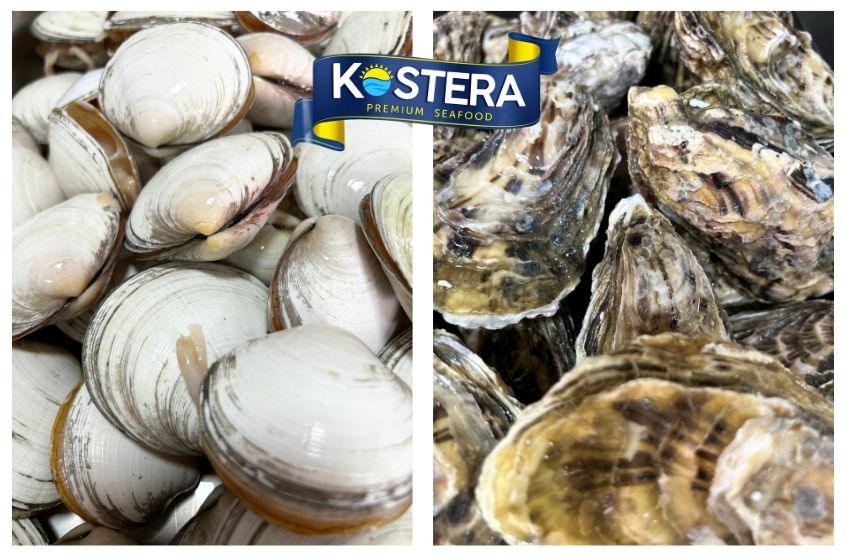
Bivalve Mollusks: Their Role in the Ecosystem and the Importance of Purification
Introduction
Bivalve mollusks, such as clams, oysters, and mussels, play a fundamental role in marine ecosystems due to their filtration capacity. These organisms are composed of two shells that close tightly with adductor muscles to protect their internal organs, which they use for feeding and respiration (Dután & Sierra, 2022). However, their habitat in low-mobility coastal areas exposes them to high levels of pollution. In this context, bivalve mollusk purification becomes an essential process to reduce pathogen loads and ensure these mollusks are safe for human consumption.
Ecological Importance of Bivalve Mollusks
Bivalve mollusks act as natural filters, extracting suspended particles and microorganisms from the water for nourishment. This process significantly improves water quality. Research indicates that a single mollusk can filter several liters of water daily, helping regulate turbidity and chemical composition (Baeta et al., 2014).
This filtration process not only enhances water clarity—allowing greater light penetration and benefiting aquatic vegetation—but also mitigates eutrophication, a phenomenon caused by excess nutrients that leads to algae blooms and oxygen depletion in water bodies.
Additionally, these marine mollusks contribute to nutrient cycling and provide shelter and food for various marine species, strengthening biodiversity in coastal areas (Ramón & Galimany, 2022). For these reasons, bivalve mollusks are vital in food chains and in maintaining the stability of marine ecosystems.
Associated Risks and the Need for Purification
Due to their ability to accumulate contaminants, bivalve mollusks can retain pathogens and pollutants, including viruses and bacteria, in their bodies (Dután & Sierra, 2022). If these contaminants are not removed through purification, they can pose health risks, causing illnesses such as gastroenteritis and infectious hepatitis.
In several countries, mollusk purification is a mandatory process before products reach the consumer. This practice not only adheres to international marine food safety regulations but also protects public health and strengthens trust in the seafood industry.
In nations like France, Japan, Italy, and Spain, purification is a standard requirement to ensure that these products meet the highest quality and safety standards (Castillo & Muñoz, 2021).
Nutritional Benefits of Bivalve Mollusks
Beyond their ecological benefits, bivalve mollusks are an excellent source of nutrients. Their meat, low in fat and rich in high-quality protein, provides essential minerals such as iron, calcium, potassium, iodine, and omega-3 fatty acids, all beneficial to human health (Crawford, 2002). Studies show that regular consumption of these mollusks contributes to a balanced diet, supporting cardiovascular health and strengthening the immune system.
KOSTERA’s Role in the Peruvian Sea
In the Peruvian sea, KOSTERAleads the way in implementing purification technology. Recognizing the richness and diversity of Peruvian bivalve mollusks, the company has established a modern mollusk purification plant using a recirculation system and UV-treated water disinfection.
This commitment to marine food safety not only protects consumer health but also positions Peru as a global supplier of high-quality purified seafood. By complying with international standards, KOSTERA opens doors to new markets and contributes to the sustainable development of Peru’s fishing industry.
In the Peruvian sea, KOSTERAleads the way in implementing purification technology. Recognizing the richness and diversity of Peruvian bivalve mollusks, the company has established a modern mollusk purification plant using a recirculation system and UV-treated water disinfection.
This commitment to marine food safety not only protects consumer health but also positions Peru as a global supplier of high-quality purified seafood. By complying with international standards, KOSTERA opens doors to new markets and contributes to the sustainable development of Peru’s fishing industry.
Referencias Bibliográficas
Castillo, I. & Muñoz, K. (2021). Diseño de un sistema de depuración de moluscos bivalvos, a escala comercial, adaptado a las realidades de las principales zonas de producción de concha prieta en Ecuador. [Tesis de grado]. Escuela Superior Politécnica del Litoral.
Dután, T. & Sierra, N. (2022). Beneficios de la depuración de moluscos bivalvos: evaluación y socialización. [Tesis de grado]. Escuela Superior Politécnica del Litoral.
Lee, R., Lovatelli, A., Ababouch, L. (2010). Depuración de bivalvos: aspectos fundamentales y prácticos. FAO.
Baeta, M., Ramón, M., Galimany, E. (2014). Decline of the Callista chione (Bivalvia: Veneridae) beds in the Maresme coast (northwestern Mediterranean Sea). Ocean & Coastal Management, 93, 15-25.
Ramón, M. y Galimany, E. (2022). El océano que queremos: ciencia oceánica inclusiva y transformadora. Contribución de los bivalvos a los servicios ecosistémicos del litoral. Institut de Ciències del Mar, CSIC, Barcelona.
